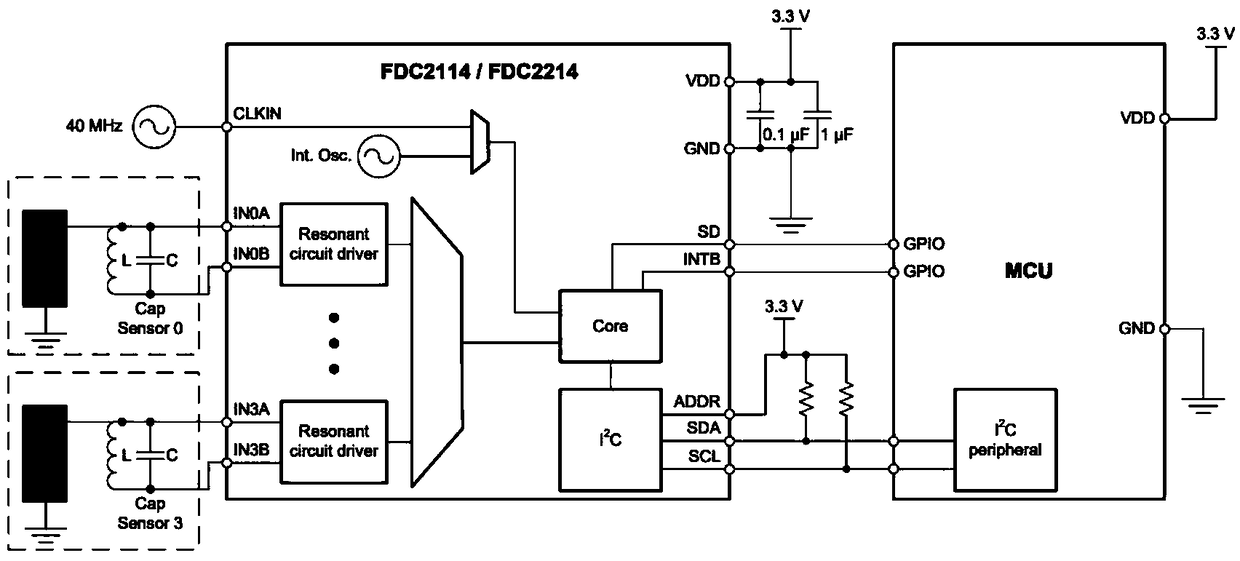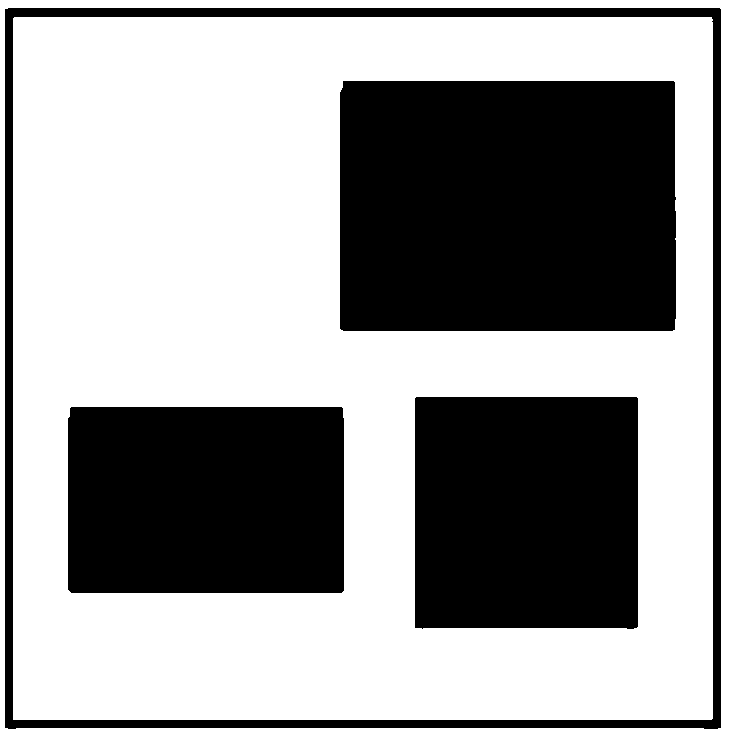A gesture recognition system and method based on K-nearest neighbor algorithm
A K-nearest neighbor algorithm and gesture recognition technology, applied in the field of gesture recognition, to achieve the effect of large degree of freedom of gestures and fewer sensor slices
- Summary
- Abstract
- Description
- Claims
- Application Information
AI Technical Summary
Problems solved by technology
Method used
Image
Examples
Embodiment 1
[0037] This embodiment introduces the hardware equipment of the embedded intelligent gesture recognition system based on the K-nearest neighbor algorithm of the present invention.
[0038] Based on the sensor chip FDC2214 of TI company, a gesture recognition device is designed and manufactured to realize the judgment of guessing and punching. The device has two working modes of training and judgment. In the judgment mode, the experimental device can judge the designated personnel for guessing and throwing punches. Here, the guessing judgment refers to the accurate judgment of gestures "rock", "scissors" and "cloth", and the judgment of punching refers to the accurate judgment of gestures "1", "2", "3", "4" and "5". In the training mode, any person can be trained in the gestures of the guessing game and the punching game. After a limited number of trainings, the correct judgment of the guessing game and the punching game can be made.
[0039] FDC2214 is a capacitive detection...
Embodiment 2
[0045] This embodiment introduces the working method and software algorithm flow of the embedded intelligent gesture recognition system based on the K-nearest neighbor algorithm of the present invention.
[0046] (1) Capacitance measurement method of FDC2214
[0047] The input end of each detection channel of the FDC2214 chip is connected with an inductor and a capacitor to form an LC resonant circuit. The sensing end of the measured capacitance is connected to the LC circuit, which will generate an oscillation frequency, and the measured capacitance value can be calculated according to the frequency value. Basic physical formulas based on common knowledge
[0048]
[0049] It can be seen that the capacitance is related to the distance between the two plates and the area between the plates. When making different gestures "rock, scissors, cloth, 1, 2, 3, 4, 5", due to the distance between the sensor and each gesture Different areas lead to different capacitances detected by...
Embodiment 3
[0056] This embodiment introduces the circuit and program design of the embedded intelligent gesture recognition system based on the K-nearest neighbor algorithm of the present invention.
[0057] Such as Figure 4 As shown, it is the FDC2214 capacitive sensor circuit design of the present invention. Connect an inductor and a capacitor to the input end of each detection channel of the chip to form an LC circuit. The sensor terminal of the measured capacitance is connected to the LC circuit to generate an oscillation frequency, and the measured capacitance value can be calculated according to the frequency value.
[0058] Such as Figure 5 Shown is the STM32 programming flow chart of the present invention. When specifically judging a certain gesture, the present invention adopts the K nearest neighbor algorithm. The specific content of the algorithm is: given the training data set of each gesture and calculating the mean value, for a new input instance, calculate the Euclide...
PUM
 Login to View More
Login to View More Abstract
Description
Claims
Application Information
 Login to View More
Login to View More - R&D
- Intellectual Property
- Life Sciences
- Materials
- Tech Scout
- Unparalleled Data Quality
- Higher Quality Content
- 60% Fewer Hallucinations
Browse by: Latest US Patents, China's latest patents, Technical Efficacy Thesaurus, Application Domain, Technology Topic, Popular Technical Reports.
© 2025 PatSnap. All rights reserved.Legal|Privacy policy|Modern Slavery Act Transparency Statement|Sitemap|About US| Contact US: help@patsnap.com



